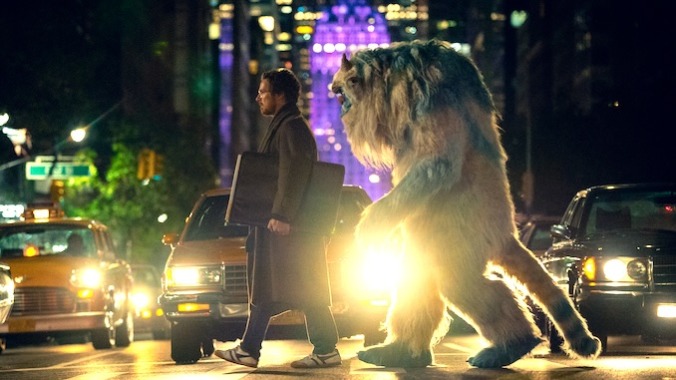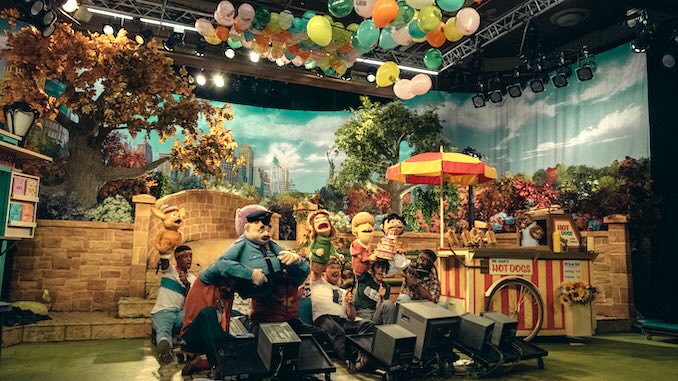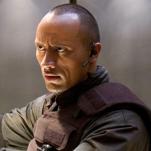Puppetry Steals the Show in Eric, So Why Aren’t Puppets in More Media for Adults?
Photo Courtesy of Netflix
It is a truth that must be universally acknowledged: people love puppets. Puppetry is one of the most endearing artforms in human existence. An artform of overwhelming fondness. They invite us to play pretend, to accept a felted reality and talk to a creature rather than acknowledge a hand.
Most of our collective love of puppets comes from childhood. Especially in the United States, puppetry is a staple of children’s TV. Many people alive today grew up watching puppets in some form, whether it was Sesame Street, Lazy Town, or even Edgar Bergen’s ventriloquist act from the 1930s-’50s.
But in the year 2024, puppets aren’t something you see in much media anymore. They might be technically there, like puppets being used in the recent Star Wars sequel trilogy, but there isn’t much that centers puppets the way The Muppets, Dark Crystal, or Labyrinth did.
Netflix’s new series Eric attempts to bring puppets into the world of media for adults. Benedict Cumberbatch stars as Vincent, the creator of a Sesame Street-esque children’s puppet show Good Day, Sunshine, who begins to hallucinate a giant monster puppet (also voiced by Cumberbatch) while he searches for his missing son. The 1980s NYC-set show takes a dark perspective by featuring a storyline that incorporates alcohol and drug addiction, government corruption, homophobia and the AIDS epidemic, and child sex trafficking.
It’s a rare instance of puppetry trying to branch out from its childhood associations. The inclusion of puppetry in Eric’s narrative is because of a children’s TV show, yes, but the show uses the artform as a way to discuss its much darker subject matter.
In an interview with Paste Magazine, puppeteer Raymond Carr discussed how even Jim Henson was wary of puppetry being defined by a certain demographic. “He was concerned about getting pigeonholed into the children’s television, children’s entertainment world,” Carr said. “He was not sure that he wanted to do Sesame Street back in the day because of that. Because he, along with a lot of other puppeteers, knew that puppetry has the ability to reach all ages and can tackle all subject matters.”
The man behind much of Eric’s puppetry accuracy is Carr, a veteran puppeteer trained by The Jim Henson Company. Carr has worked with puppets for decades, often in children’s TV shows like Lazy Town, Earth to Ned, and Moon and Me. On Eric, Carr served as puppet captain, teaching many of the actors the art of puppeteering and advising the crew on how a show like Good Day, Sunshine might actually run.
One of Carr’s biggest insights came from the fact that puppetry is not conducted in the UK, where Eric series creator Abi Morgan and director Lucy Forbes are from, the same way it is in the U.S. “Because the show, Eric, is specifically based on American children’s entertainment, particularly of the 1980s, they wanted to make sure that they had somebody who had experience in that world and could work in that space,” Carr said.
Due to Carr and the team of puppeteers and puppet craftsmen behind Eric, the series is especially skilled at depicting how puppetry works. Carr taught the actors how to hold up their hands and be aware of the space on the stage while performing. He also liaised between the art department and camera team on how to navigate what the set-up of a series like Good Day, Sunshine would be, focusing on limited set pieces and a practical use of space. “If you are trying to do a PBS-style show where the money is limited and you’re pumping out content quickly, you don’t really have time to move major set pieces around that freely like you would on The Muppet Show or even Fraggle Rock or something like that.”
-

-

-

-

-

-

-

-

-

-

-

-

-

-

-

-

-

-

-

-

-

-

-

-

-

-

-

-

-

-

-

-

-

-

-

-

-

-

-

-









































